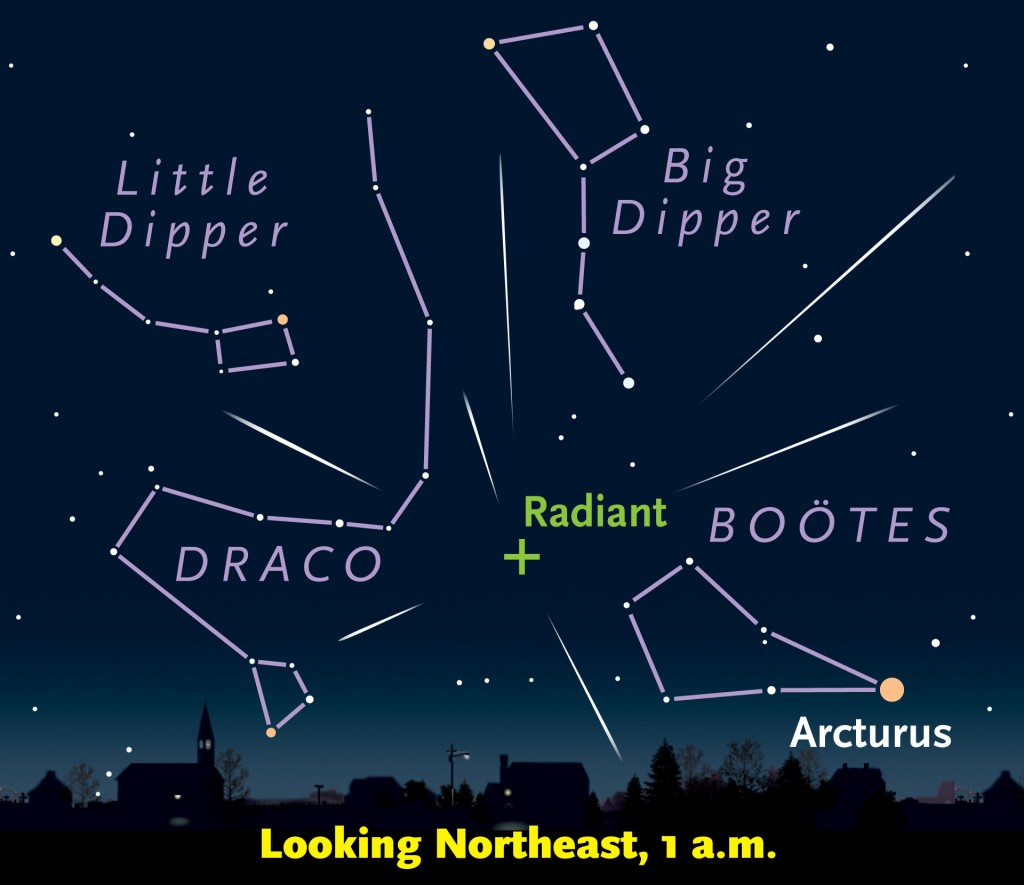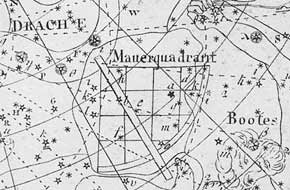The Quadrantids, which peak on the morning of January 3rd, is one of the year's best meteor showers. But this shower isn't spread out over several days — most of the action takes place over just a few hours.
Here's a riddle: What's the strongest annual meteor shower that practically no one's heard of?
Answer: The strong but elusive Quadrantid meteor shower — elusive because the peak lasts just a few hours in the first days of January.
The "Quads" can in theory deliver at least 1 meteor per minute under excellent sky conditions — the idealized zenithal hourly rate (ZHR), for someone with perfectly dark skies and the meteor's radiant overhead — is a very high 120. But in practice few observers ever see anything close to this many, because the shower's maximum activity lasts only several hours and is easy to miss.

Sky & Telescope diagram
This year the predicted peak occurs near 14h Universal Time on Tuesday, January 3rd. That corresponds to 9 a.m. EST (a few hours after dawn) and 6 a.m. PST. So this timing generally favors viewing from North America, especially in the Far West. Moonlight won't be much of a problem — a thick waxing crescent will set by mid-evening.
The Quadrantids all seem to radiate from a point in northern Boötes between the head of Draco and the end of the Big Dipper's handle. That means this radiant up all night for watchers in the mid-northern latitudes, so you may see a few Quads even in the evening. They'll be striking our atmosphere at "medium" speed, 43 km (27 miles) per second.
However, the radiant is highest in the sky before dawn, so that's when rates will be highest - and not simply because of the peak's timing. Earth's dawn side faces forward in our 30-km-per-second flight around the Sun. This added velocity also means the upper atmosphere hits more meteors and hits them harder (making them brighter) than when meteors come at us from behind in the evening.

The Quadrantid meteor shower is named for the obsolete constellation Quadrans Muralis, the Mural Quadrant, an antique device that was used for measuring celestial objects' positions. French astronomer Joseph Lalande created it in 1795 to identify stars in a dim region between Ursa Major and Draco. Quadrans was still widely recognized when its namesake meteor shower was first identified in 1825, but it didn't make the cut when the International Astronomical Union set today's official list of 88 constellations in 1930.
The source of the Quadrantids is not a comet but rather an asteroid called 2003 EH1. Because reports of this strong shower don't extend into antiquity, as some others do, dynamicists suspect it came about due to relatively recent events. Perhaps the parent object is a chunk of a dead comet that broke apart several centuries ago, and that the meteors are small bits of debris from this fragmentation.
In any case, the Quadrantid meteor shower has the potential, at least, to wow you with celestial fireworks in the days ahead.
 0
0
Comments
You must be logged in to post a comment.